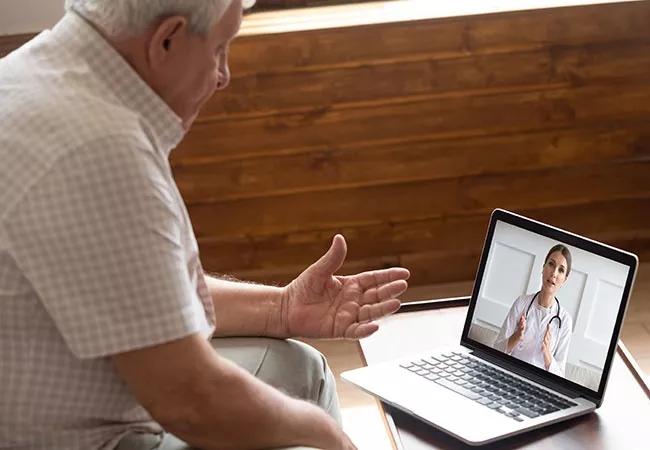Advertisement
Multispecialty teams address patients’ needs to prevent health crises.

Cleveland Clinic has established an innovative home-based care model designed to prevent repeated hospitalizations and emergency department visits among high-risk patients.
Advertisement
Cleveland Clinic is a non-profit academic medical center. Advertising on our site helps support our mission. We do not endorse non-Cleveland Clinic products or services. Policy
The program was developed to serve homebound primary care patients with chronic illnesses. Participants were enrolled by their Cleveland Clinic physician or, in some cases, self-referred. With the arrival of COVID, the model was tweaked to serve a broader patient population.
“When COVID arrived, the need to keep high-risk patients healthy at home became a priority. We decided to reach out to patients throughout our health system to see how they were faring and intervene whenever necessary to prevent problems from getting out of control,” says program director William Zafirau, MD, Cleveland Clinic’s Medical Director for Connected Care.
In the original plan, most patients enrolled in the Medical Care at Home Primary Care practice called in when they had a concern: Perhaps they were decompensating and needed IV diuretics, required antibiotics for a simple urinary tract infection, or were for a refill of maintenance medications.
The call would be triaged by a registered nurse, who would dispatch a Cleveland Clinic paramedic to assess and treat the patient in their home in conjunction with a virtual visit with a board-certified physician.
These days, nurses initiate calls to high-risk patients and ask questions to obtain a thorough assessment of their condition.
“We use information from multiple sources, including the patient portal in our electronic medical records system, an app the patient downloads and traditional interactions to decide what level of monitoring the patient needs,” says Dr. Zafirau.
If the nurse identifies the need for medical intervention, the patient is triaged to a virtual visit by a physician or a home visit by a paramedic.
A second function of the program serves recently discharged patients identified as high-risk for rehospitalization by their care coordinators.
The initial home visit is conducted by an advance practice nurse (APN), who addresses questions about new medications, evaluates the need for special equipment or home care, educates the patient and family about the management of any new condition resulting from the recent hospitalization and confirms the goals of care.
A proprietary risk-scoring tool is used to determine the likelihood of readmission within 30 days. Patients at increased risk receive two to five visits from paramedics, along with virtual visits from a physician, within a 30- to 45-day period.
“Our goal is to ensure these patients have a good transition back to their primary care provider,” says Dr. Zafirau.
Although outcomes of the High-Risk Transition Program have not yet been published, initial results are encouraging. “This program will definitely continue,” he says.
Advertisement
He expects outcomes to be comparable or superior to those of similar programs, which lacked the telemedicine and risk-based screening components. Published results of these programs indicate they have resulted in about one-third fewer readmissions.
Changes in the home-based care model necessitated by COVID are being evaluated to determine which will be retained after the crisis passes.
“COVID will permanently change the way we do things,” says Dr. Zafirau. “It’s clear that getting in a car and driving to see a patient is no longer optimal. We are moving from a model that is largely visit-based to one that is a hybrid of visit-based, telemedicine and remote monitoring.”
Advertisement
Advertisement

Patients report improved sense of smell and taste

Clinicians who are accustomed to uncertainty can do well by patients

Unique skin changes can occur after infection or vaccine

Cleveland Clinic analysis suggests that obtaining care for the virus might reveal a previously undiagnosed condition

As the pandemic evolves, rheumatologists must continue to be mindful of most vulnerable patients

Early results suggest positive outcomes from COVID-19 PrEP treatment

Could the virus have caused the condition or triggered previously undiagnosed disease?

Five categories of cutaneous abnormalities are associated with COVID-19